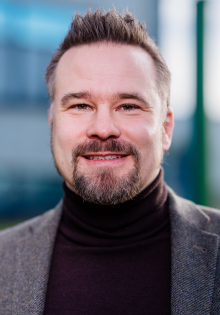The German Research Foundation (DFG) is funding a joint project being carried out by Paderborn University, the University of Rostock and Johannes Gutenberg University Mainz that plans to leverage sunlight to make chemical reactions more environmentally friendly. The aim is to provide answers to the question of how such processes can be carried out sustainably in the future despite ever-increasing shortages of resources, and how new energy sources can be harnessed here. The project is to be funded as part of the DFG��s ��Light Controlled Reactivity of Metal Complexes�� priority programme, to the tune of almost �700,000 over a period of three years. The DFG funding instrument is aimed at helping consortia from all over Germany tackle current scientific issues of high social relevance.
Leading the project in Paderborn is Professor Matthias Bauer. The chemist explains: ��Sunlight can help protect the climate, and not only by converting it into electrical energy using solar cells �C converting solar energy directly into chemical products such as hydrogen is another important pillar for a sustainable future. To date, substances based on precious metals have been used for such photochemical reactions. However, the production of such precious metals generates CO2 emissions of 30 tonnes per kilogramme, and thereby has a significant impact on the environment. However, if precious metals are replaced with iron, for example, the amount of climate-damaging CO2 can be cut to virtually zero. The production of one kilogramme of iron generates about two kilogrammes of CO2.�� This is where the interdisciplinary team comes in. The scientists are developing new iron compounds that are suitable for converting light into chemically usable energy.
To achieve this, the team are employing unique methods that allow them to improve the way iron compounds work. By using ultra-fast X-ray pulses, which can be produced at just a few large research facilities in the world, they are creating films of the molecular processes in the materials used, for example. The X-ray pulses are generated on ��X-ray free electron lasers�� (XFELs) and are necessary in order to film the processes after the absorption of light in real time. This type of pulse lasts just a few femtoseconds. For comparison: While light takes one second to travel to the moon, it covers just one thousandth of a millimetre in a femtosecond. ��Ultra-fast X-ray spectroscopy offers us a unique tool for analysing and targeting the sustainable iron-based substances for harnessing sunlight,�� says Bauer.
��Basic research plays a key role in the project. The main aim is to understand and improve the properties of these new iron complexes using a wide range of methods,�� explains Professor Stefan Lochbrunner from the University of Rostock, where the behaviour of the complexes when irradiated with light is being investigated spectroscopically with high time resolution and the measurement results then compared with calculations. ��The calculations are pushing current methods to their limits, which means that the methods need refining,�� adds Professor Oliver K��hn, also from the University of Rostock.
��The photochemical use of light will be one of the most important bases for new technological developments in the future. Molecular metal complexes, which we are jointly researching here, offer a broad spectrum of design possibilities to drive these developments forward,�� says Professor Katja Heinze, co-ordinator of the DFG priority programme at Johannes Gutenberg University Mainz.


